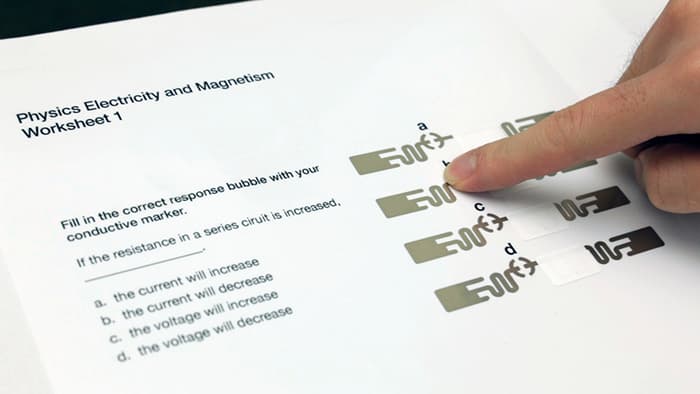
Created by researchers at the University of Washington, Disney Research and Carnegie Mellon University, the idea behind PaperID is simple, making use of cheap, off-the-shelf RFID tags. The tags don't require batteries to function, and each one features a unique identifier. A reader device is placed in the room where the tags are being used, which is then able to identify each one individually.
Users can interact with the tags by disturbing the signal path between tag and reader, which can be achieved through simple actions such as covering, swiping, or waving a hand in front of it. The system uses custom algorithms to recognize exactly how the signal is being disrupted, recognizing the action as a command.
The tags are extremely cheap to buy, coming in at around 10 cents each, and it's even possible for users to create their own by stencilling or freehand drawing simple antenna patterns on a piece of paper using conductive ink. Alternatively, they can be created using a standard printer equipped with silver nanoparticle ink.
The technology has the potential to be more versatile than it perhaps first appears, with different arrangements of tags providing everything from an on/off switch to sliders. For example, placing a series of tags together in a circle pattern allows for the creation of an adjustable knob. The possibilities for real world uses are practically endless – it could be used for everything from providing classroom tests with instant results, to controlling music.
While the researchers used paper as a base for the PaperID technology, the idea could, of course, be applied to other materials.
"Ultimately, these techniques can be extended beyond paper to a wide range of materials and usage scenarios," said researcher Alanson Sample. "What's exciting is that PaperID provides a new way to link the real and virtual world through low-cost and ubiquitous gesture interfaces."

 Previous page
Previous page Back to top
Back to top







